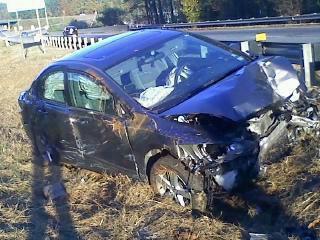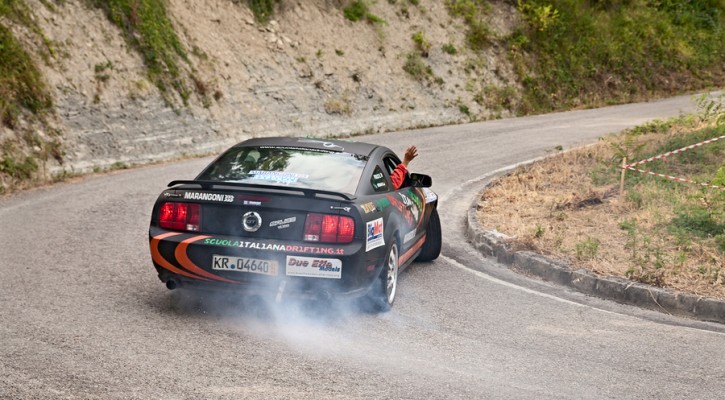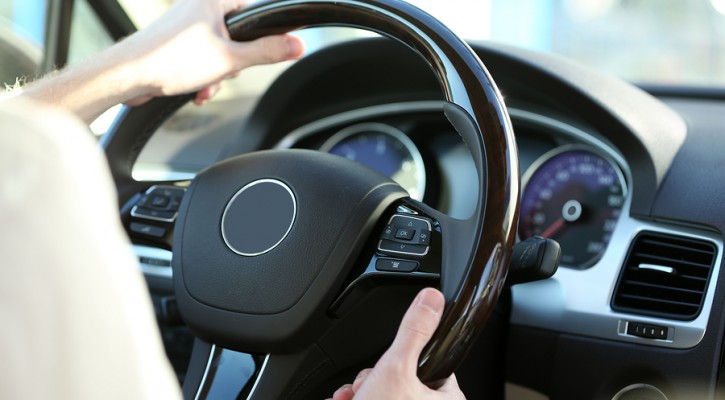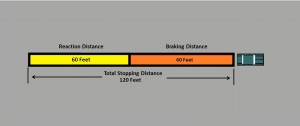
Teen Drowsy Driving
December 8, 2014
Drowsy driving among teens is an issue that doesn’t get much notice when compared with all the other issues teen drivers face on the road but it’s a critical problem in the US. The following story is a typical example of the problem.
A 16 year old driver with less than 6 months solo experience behind-the-wheel set out, after school and cross country practice, with his 14 year old brother as a passenger to pick up their mother. Continue Reading

Ask The Driving School Instructor: Braking Distance VS Stopping Distance
December 3, 2014
Question: I’m studying for my driving exam and I’m confused about the difference between stopping distance and braking distance.
Answer: It can be a little confusing, I’ll try to sort it out for you.
If you encounter an emergency on the road requiring you to stop suddenly, there are two parts that make up the total stopping distance.
- Reaction distance
- Braking distance
When you’re in an emergency situation, it takes time to react to the emergency, to brake, and to finally bring your vehicle to a complete stop. Remember that your vehicle is traveling a surprisingly long distance every second. At 40 mph, your vehicle will travel approximately 60 feet per second and a lot can happen in that short amount of time.
Reaction time
The time it takes you to react and respond to an emergency can be broken down into three parts:
- Perception or awareness time
- Decision time
- Action time
Let’s look at each part by imagining a scenario that requires you to make a sudden stop. Let’s say that you are traveling at 40 mph when the driver of the car ahead of you suddenly applies his brakes.
Perception time
The perception or awareness time is how long it takes before you are even aware that the driver ahead is suddenly stopping. If you aren’t expecting an emergency, it will take time before you realize that the car ahead is suddenly braking
Decision time
Now that you’re aware of the emergency ahead, you have to decide what to do. Will you hit the brakes or swerve into another lane to go around? If you try to change lanes, is the lane clear or are there other vehicles that may be in the way? It takes time to decide what to do. In our emergency, let’s say that you decide to hit the brakes but that decision took time
Action time
Now that you’ve decided you’re going to brake, you have to move your foot from the gas pedal to the brake pedal and push it all the way down. That also ate up precious time.
For the average person, the total reaction time can take from three-quarters to a full second. At 40 mph, if your reaction time is one full second, you’ll have traveled almost 60 feet before applying the brakes.
Braking Distance
Now that you’ve applied the brakes, it still takes time to come to a complete stop. For an average car that weighs almost 3,000 pounds, that can take up to 60 feet.
Total stopping distance
So, the total stopping distance is made up of both the reaction distance plus the braking distance. Adding the two together means that, at 40 mph, it can take up to 120 feet before your vehicle will come to a complete stop. That’s why maintaining a safe following distance between you and the vehicle ahead is so important.
To test your reaction time, visit: How fast is your reaction time?

“ Swangin ” Stupid And Deadly
November 25, 2014
A new word was introduced into our vocabulary; “ swangin.” The term, first introduced by the hip hop artist Stalley on a 2013 album, means swerving from lane to lane as you drive down the road. While it may make for a good song, in practice, it’s dangerous, deadly and not at all smart.
Two days ago, an 18 year old driver who was swangin on a roadway in a business district of Houston,Texas lost control of his car, slammed into a fence and rolled over. His 15 year old female passenger, who wasn’t wearing a seat belt, was ejected from the vehicle and killed.
The problem with swangin is that, as the car swerves back and forth, the tires have less contact with the road. If the speed is high, there’s even less tire contact. Once the tires lose contact with the road, there’s no way to control the car.
No matter how good a driver you may think you are, if you’re swangin, there’s no way you can overcome the physics involved in keeping the car on the road. When you put these kinds of stresses on a car, you’re asking for trouble.
This isn’t the first time someone was killed as a result of swangin. Another Houston area teen lost his life as the result of a swangin crash in October.
Read more: ‘Swangin’ crash kills 15-year-old female passenger; driver charged

More Evidence Supports Later School Start Times
November 19, 2014
Another study has been published showing that later start times for high schools can reduce teen crashes. The study, conducted by the Eastern Virginia Medical School followed another, earlier study conducted in 2011 that looked at teen crash rates in two Virginia school districts with different high school start times.
The latest study looked at teen crash rates in Virginia’s Chesterfield and Henrico counties. After determining that there were no discernible differences in the adult crash rate between the two counties, the researchers compared the teen crash rates for the two counties. The researchers found that the crash rate for teens in Chesterfield county where school begins at 7:20 AM was significantly higher than the teen crash rate in Henrico county where school begins almost one and a half hours later at 8:45.
These findings agree with earlier, similar studies that led the American Academy of Pediatrics to issue a policy statement last August calling on school districts across the nation to adjust their high school start times no earlier than 8:30. According to the Academy statement, teen sleep rhythms naturally shift and it’s nearly impossible for teens to get to sleep earlier than 10:30 PM. Developing teens also need more sleep than adults. When schools start too early, it’s impossible for teens to get the needed amount of sleep leaving them fatigued and at risk when they drive. Other studies also point to a correlation between later start times and higher standardized test scores for teens.
All of the research points in the same direction. Later school start times for teens can save lives. School boards and administrators in districts where school starts earlier than 8:30 AM need to be made aware of this data and should be urged to move the start times to later in the morning.
For more information, read: Research reinforces link between increase in teen driver crashes and early high school start times

Ask The Driving School Instructor: Hand Over Hand Steering
November 16, 2014
Question: Do I need to use the hand over hand technique while making a left or right turn, some people say yes some no. Can I just keep both hands on steering wheel, I have a test coming up this week.
Answer: There’s nothing in the Florida driver’s handbook about using the hand over hand steering method. The manual only says that you should keep both hands on the wheel and maintain control of the vehicle while steering. As a former license examiner for Florida’s Division of Drivers Licenses, I can tell you that I didn’t make drivers use that method during the test; I only checked to see if both hands were on the wheel, that they were in control, and could steer the car in the right direction.
During the test, you should keep both hands at the 8 and 4 o’clock position on the wheel. When making left or right turns, the best method to use is the “push and pull” method. That means, if you’re making a right turn, pull the wheel with your right hand and push with your left. When straightening out, just relax your grip and let the wheel slide naturally back to the neutral position.
The proper placement of your hands and the push and pull method are best explained in the video below.
Good luck on your test.

